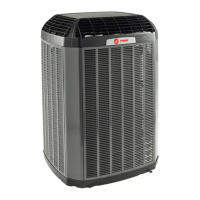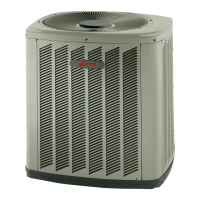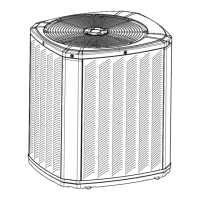Do you have a question about the Trane 4TWV0060A1000A and is the answer not in the manual?
Warnings for hazardous voltage, grounding requirements, and high leakage current.
Precautions for refrigerant oil, refrigerant containment, hot surfaces, and service valves.
Guidance on brazing requirements and leak checking for system integrity.
Guidance for installations near salt water, including optional Seacoast Kit.
Determining required line length and lift for subcooling charging corrections.
Guidelines for insulating vapor and liquid lines to ensure proper performance.
Precautions for reusing existing refrigerant lines, emphasizing brazing and leak checks.
Guidelines for routing lines through structures and isolating them to prevent noise transmission.
Step-by-step instructions for opening the gas service valve.
Procedure for cautiously opening the liquid service valve.
Checking outdoor and indoor temperatures as required for system charging.
Using charts to correct subcooling values based on line length and lift.
Adjusting refrigerant for proper gage pressure and allowing system stabilization.
Verifying system performance using pressure curves after charging.
Instructions for accessing and initiating the forced defrost test via the CDA.












